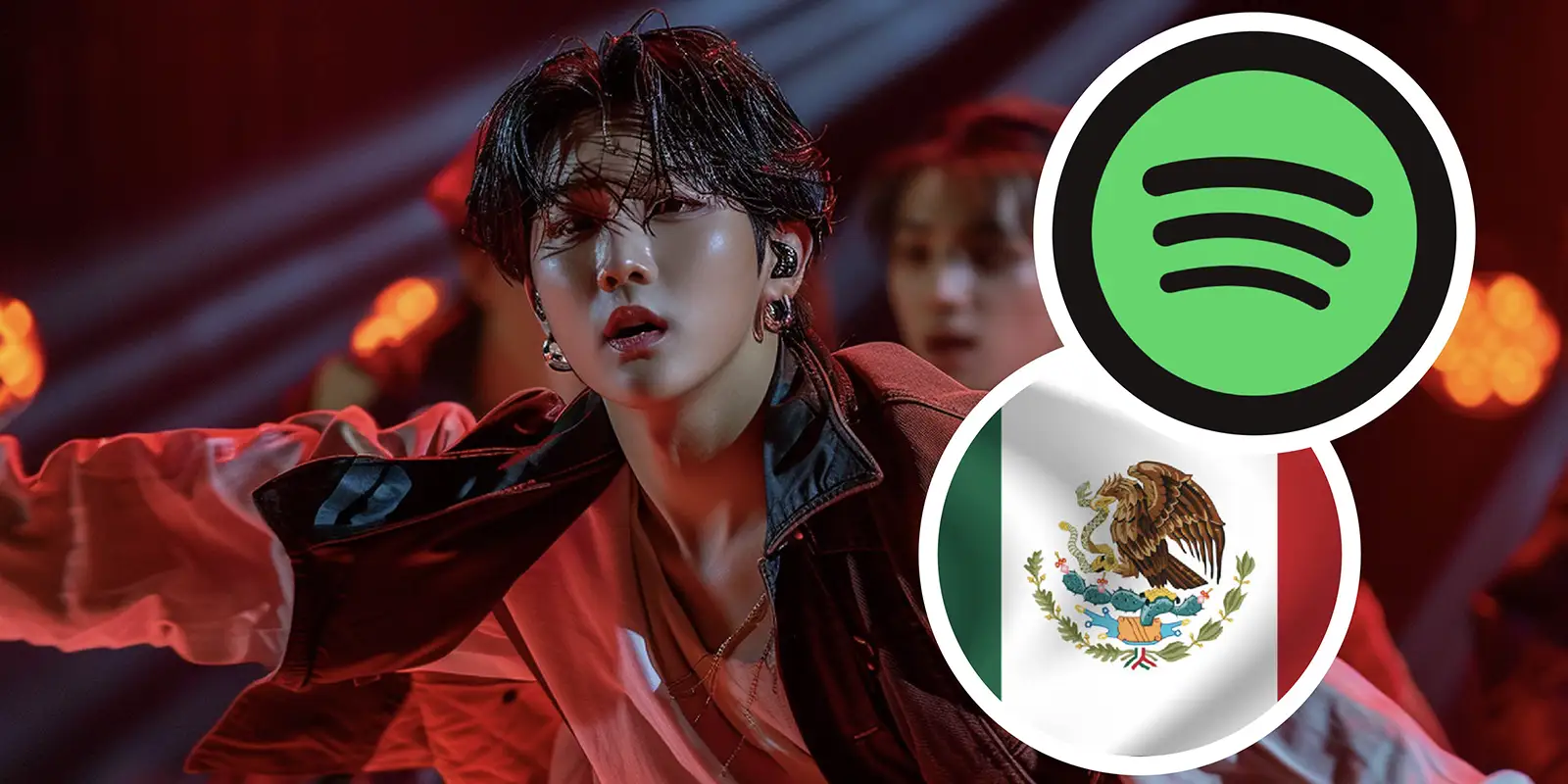What began as a cultural curiosity in the early 2000s has become a true phenomenon: Mexico has become one of the main stages for K-Pop outside Asia. Today, the country is the fifth largest market in the world on Spotify for this genre and the only Spanish-speaking country to appear in the global top 10. With more than 14 million listeners on the platform, Korean fever is not only heard: it is lived, celebrated, and reinvented with a very Mexican touch.

For many, their first contact with Korean culture came through television dramas and their captivating soundtracks. However, it was in the 2010s, with the global impact of groups such as BTS, BLACKPINK, TWICE, Stray Kids, and Red Velvet, that K-Pop exploded in popularity. In the last five years alone, plays of the genre on Spotify Mexico have grown by more than 500%.
But beyond the numbers, what sets Mexican fans apart is their creative passion. They are not content with just listening: they organize concerts, create fan art with elements of local culture, hold themed bazaars, and turn every release into an event. On social media, they are a force capable of setting trends, supporting charitable causes, and spreading the Korean wave to every corner of the country.
Why does K-Pop connect so well in Mexico?
The reasons go beyond catchy rhythms and flawless choreography. The lyrics often address universal emotions: love, friendship, dreams, and overcoming obstacles. This creates a sense of community that transcends language. According to Alejandro Grageda, Head of Music at Spotify Mexico, K-Pop artists achieve a genuine connection by being authentic and expressing their feelings, something that resonates deeply with Mexican youth.
From Korea to the world: a bit of history
Modern K-Pop began in 1992 with Seo Taiji and Boys, a group that broke the mold by fusing Western styles such as rap, hip-hop, rock, jazz, and electronic music. From there, the industry grew with the creation of major companies such as S.M. Entertainment, YG Entertainment, and JYP Entertainment, responsible for training the first generations of idols. In the 2000s, solo artists such as BoA and Rain paved the way in Asia, while groups such as Super Junior and Girls’ Generation gained international recognition. The phenomenon took a definitive leap in 2012 with the global success of PSY and his Gangnam Style, which put South Korea on the Western music radar.
Mexico, a key destination for K-Pop

Today, cities such as Mexico City, Puebla, Monterrey, Tijuana, and Mérida top the K-Pop playlists in Latin America. Local passion has made the country a must-stop for international tours: BTS visited Mexico in 2014, long before achieving global fame; BLACKPINK filled venues in 2023; TWICE in 2024; and Stray Kids in 2025.
Whether on platforms like iTunes, where artists like BTS, TWICE, LIM KIM, and ATEEZ dominate the rankings, or at massive concerts that fill stadiums, Mexico reaffirms its place as the Latin American epicenter of K-Pop. And everything indicates that this wave, far from stopping, will continue to grow with the same vibrant energy that characterizes it.






































Leave a Reply